Which Wire is Hot When Both are the Same Color? (Guide)
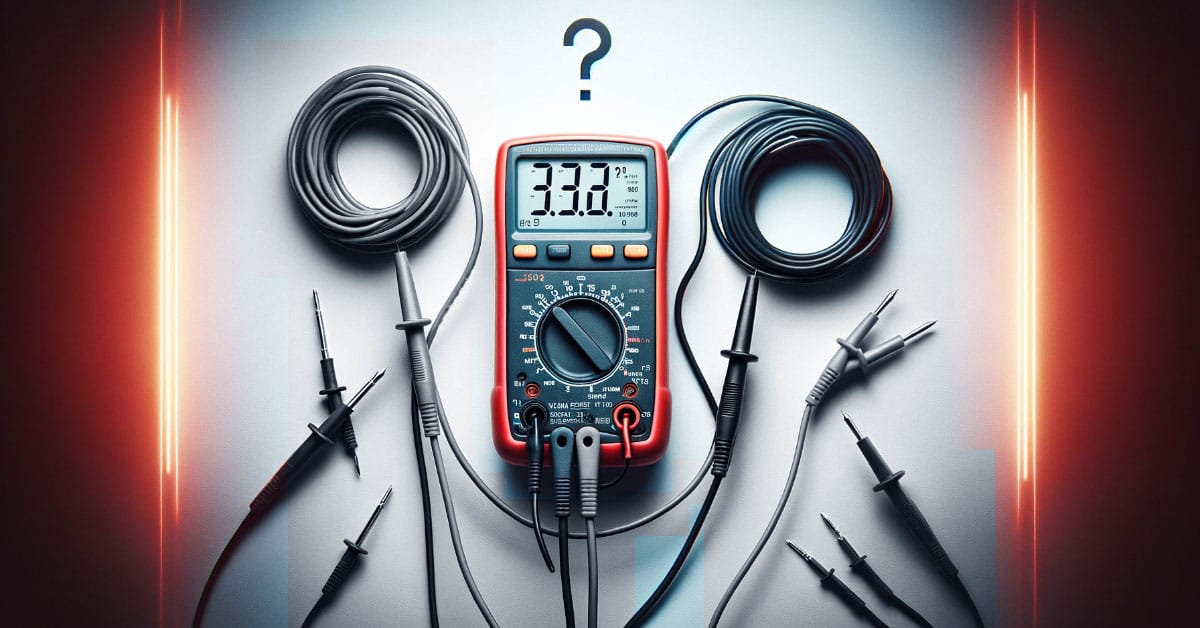
Have you ever been baffled by wires, especially when they’re the same color? You’re not alone. I get asked a common question: How do you tell which wire is hot when both are the same color?
Let’s break down how to identify which wire is hot, especially when they look the same. We’ll tackle this using the non-contact voltage tester and the trusty multimeter.
In this article, we’ll dive into the world of wiring. We’ll unravel the mystery behind identifying hot wires, even when they’re identical in color. It’s not as complicated as it seems, I promise.
Understanding Wire Basics
Hold up, hot wires – what are they? Why, they’re not hot to the touch! The term ‘hot’ refers to the wire carrying electric current.
In a typical home electrical setup, the hot wire brings power from your service panel (breaker box) to your outlets and appliances. Daily, we usually see various wire colors like black, red, or blue depicting hot wires.
What happens when both wires are the same color? How do you know which is hot? I assure you, it’s not as hassle as you’re probably making it out. The key is to understand some foundational wiring basics.
First things first – wire color. This mighty feature usually gives a lot away about a wire’s purpose and direction of electricity flow if you’re familiar with the standard color lineup:
| Wire Color | What It Signifies |
|---|---|
| Black, Red, Blue | Hot Wires |
| White or Grey | Neutral Wires |
| Green or Bare | Ground Wires |
Understanding these representations can just about save your day, but also remember, some wires don’t play by these rules.
Typically, in a two-wire system with both wires of the same color, you can use simple inspection or tools to identify the hot wire.
In newer systems, ground wires are often bare or covered in green insulation, while older systems may use a completely separate, earthed metal conduit for this purpose.
The important thing to remember here is that it’s all about safety. Electricity is as dangerous as it is helpful. So, if you’re unsure which wire is hot, don’t hesitate to hire a professional.
Tools Needed
Thumbing through my trusted tool pouch reminds me that safety comes first when dealing with electricity. Identifying the hot wire doesn’t have to be a guessing game; leaving it to chance is unnecessary.
- Non-contact voltage testers. They’re your best buddies in this kind of situation. Light, handy, and incredibly reliable – these tools can rapidly determine if a wire is hot without requiring physical contact.
- Multimeters. Don’t let the name intimidate you. Even though they look complex, with a bit of focus, you can use them fairly easily. A multimeter checks for voltage across two points.
- Wire strippers are another effective tool in this process. Remember, they’re only used when the wire is completely powered off. Exposing more wire can help you get a better reading with your voltage tester or multimeter.
So, there you have it—my pick of tools to safely identify a hot wire. You’ve got this – well, as long as you’ve got these tools at your disposal! My only advice for those who don’t is to seek professional help.
Step-by-Step Guide to Identify the Hot Wire
Let’s explore the nooks and crannies of identifying the hot wire when both wires flaunt the same color. It’s not rocket science, mind you.
I’ve devised a step-by-step guide packed with extra tips to ease this journey. Let’s get started!
Method 1: Using a Non-Contact Voltage Tester
Step 1: Prepare the Non-Contact Voltage Tester
- Turn on the non-contact voltage tester. This tool detects voltage without needing direct contact with the wire.
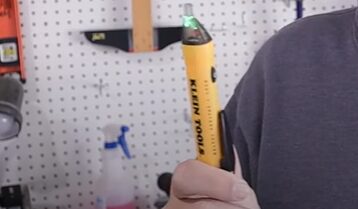
Step 2: Test the Wires
- Hold the probe of the voltage tester near the wires you’re examining. You don’t need to touch the wires directly.
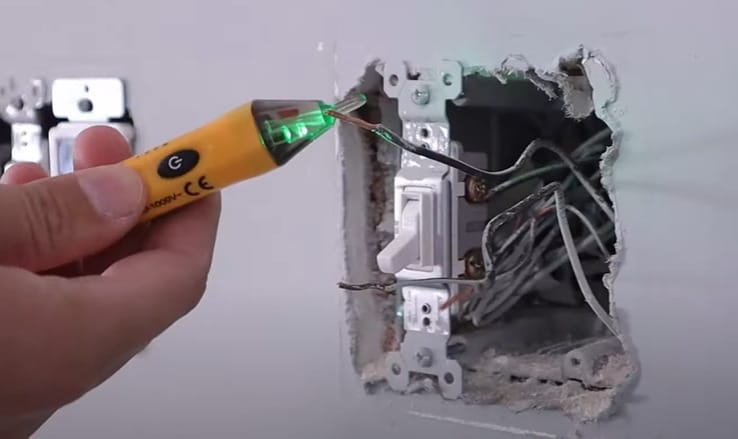
- Move the tester along the wire and observe the indications.

Step 3: Interpret the Signals
- When the tester detects voltage, it lights up and sounds an alarm. The alarms’ or the lights’ intensity might increase as you get closer to the voltage source.
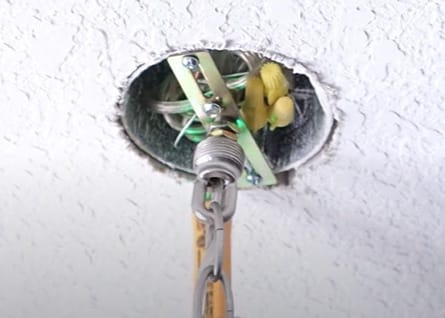
Note: While non-contact voltage testers are convenient, they might not always be reliable, especially in crowded boxes or complex wiring scenarios. They can sometimes give false positives or negatives.
Method 2: Using a Multimeter
Step 1: Set Up the Multimeter
- Turn your multimeter to the voltage setting for alternating current (AC), usually indicated by a ‘V’ with a squiggly line.
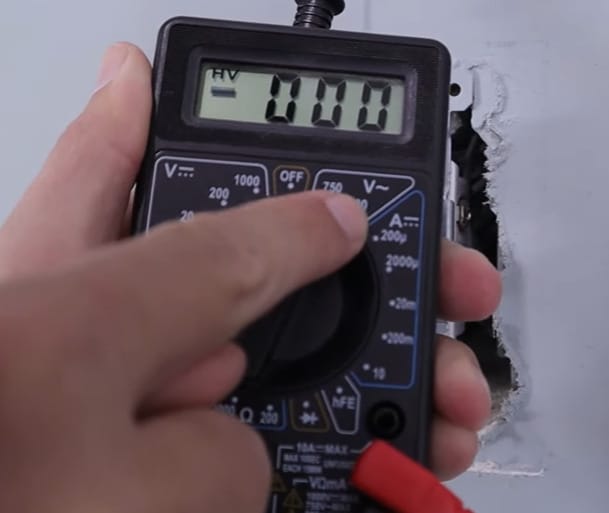
Step 2: Identify Ground
- For a reliable reading, you need to establish a ground reference. This can be a bare copper wire or, in older homes without a grounding wire, a metal box or a neutral wire.
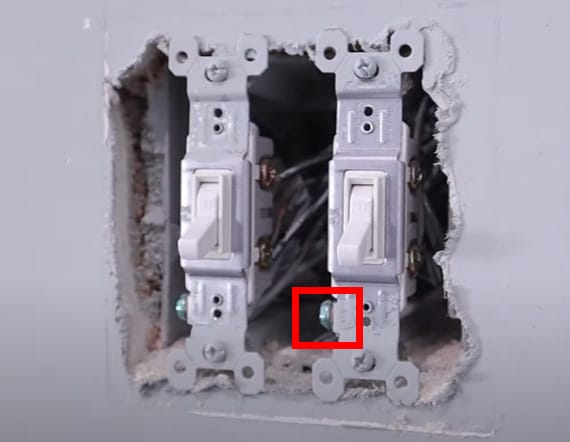
Step 3: Test Each Wire
- Place the black probe of your multimeter on the ground reference.
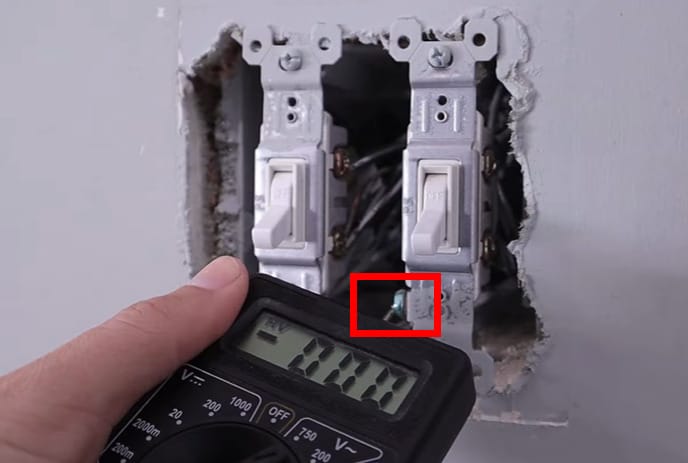
- Touch the red probe on each of the wires in question.
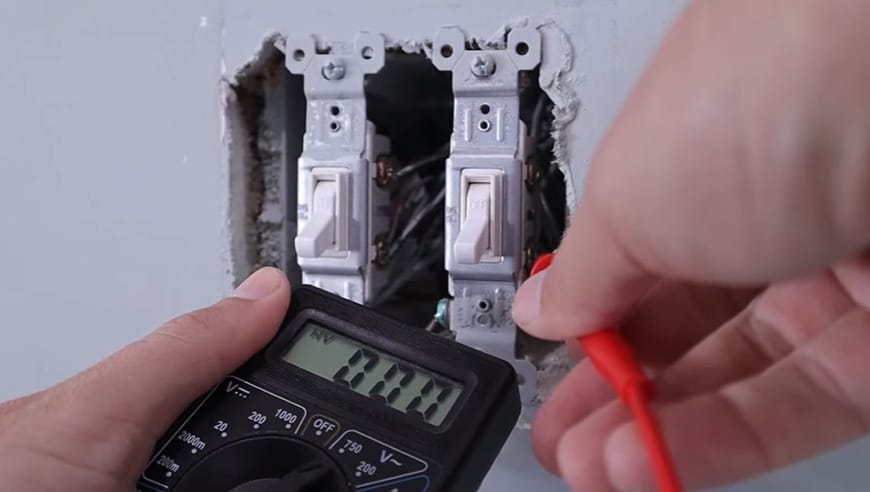
Step 4: Read the Multimeter
- The wire that shows a voltage reading (typically around 120 volts in North America) is your hot wire. The wire with little to no voltage reading is not hot.
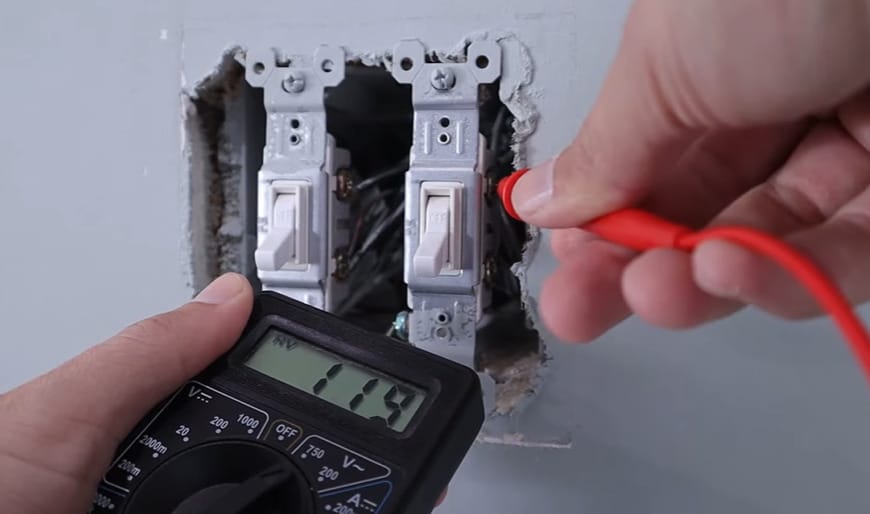
Note: Multimeters are more reliable for this testing because they give a definitive reading of whether voltage is present in a wire. They are essential for accurate and safe electrical work, especially when dealing with wires of the same color.
Following these methods, you can safely identify which wire is hot, even when both wires are the same color. Remember, safety is paramount when working with electricity.
Essential Safety Tips and Tools for Electrical Wiring Projects
When working on a wiring project, you must ensure your work meets the highest safety standards. That’s where a few crucial recommendations come into play.
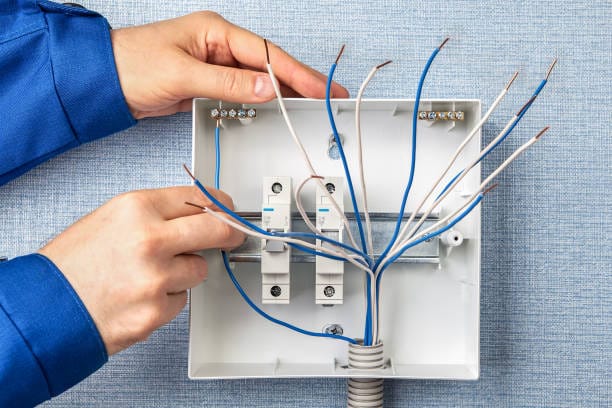
So, let’s kick things up a notch with some professional insights!
- Get Good At Gearing Up – Before you dive deep into identifying the hot wire, suit up! Your safety gear is your best friend. Safety glasses shield your peepers from flying debris, and rubber gloves bump your protection level when handling electrical wires.
- Master the Multimeter – A multimeter isn’t just a fancy tool; it’s your secret key to unlocking the mystery of same-colored wires. Invest in a high-quality multimeter and get comfortable with using it. The voltage reading on the screen points you in the right direction. Above all, remember that the higher reading ranks a wire as hot.
- No Guessing, Know the Standards – Electrical codes exist to ensure a universal standard. While the same colored wires might make it hard for an untrained eye, professionals use these rules as a beacon. Studying these regulations will refine your skills over time.
- Befriend the Non-contact Voltage Tester – Who wants to remember complicated color codes when you’ve got an easier road to take? A non-contact voltage tester is handy to settle the hot wire debate. Just remember, this tool won’t do any hard labor. It causes a beep or flash to signal the hot wire location – you’d still need to trace it.
- Work With a Tempting Toolkit – Save some toolbox real estate for a torchlight, a wire stripper, long-nose pliers, and screwdrivers. These are your partners in your journey into the world of colored wires.
Troubleshooting Tips for Non-Contact Voltage Testers and Multimeters
When dealing with electrical wires, especially those tricky same-colored ones, it’s key to have your wits about you.
Here’s a guide for when your non-contact voltage tester and multimeter readings give you the runaround.
| Tool | Issue | Possible Cause | Solution |
|---|---|---|---|
| Non-Contact Voltage Tester | False Positive/Negative | Proximity to other wires or electrical sources | Ensure isolation of the wire being tested. Keep it away from other wires or electrical devices to reduce interference. |
| No Response | Dead batteries or device malfunction | Replace the batteries. If the issue persists, the device might be malfunctioning and may need replacement. | |
| Multimeter | Inconsistent Readings | Loose connections or faulty probes | Check your connections. Ensure the probes are securely attached to the multimeter and the wires. |
| No Reading or Wrong Setting | Incorrect setting on the multimeter | Double-check that the multimeter is set to the correct mode, typically AC voltage for home wiring. | |
| Fluctuating Readings | Interference from nearby electrical sources or loose connections | Isolate the wire being tested and ensure a stable connection with the probes. | |
| Unexpectedly High/Low Reading | Crossed wires, external voltage sources, or multimeter malfunction | Verify there are no crossed wires or unexpected voltage sources. Consider using another multimeter to cross-check the readings. | |
| Zero Reading on a Live Wire | Battery issues or device malfunction in the multimeter | Check if the multimeter’s battery is low or replace it. If problems persist, the multimeter might be malfunctioning. |
Whether you’re a seasoned pro or a DIY enthusiast, these tips will help keep your electrical projects on track. And remember, if something feels off, don’t hesitate to call in a professional. Safety first, always!
Frequently Asked Questions
- Can I Rely Solely on a Non-Contact Voltage Tester?
- No, it’s best not to rely solely on a non-contact voltage tester, as it can sometimes give false readings. Always cross-check with a multimeter for accuracy.
- Is It Possible for a Neutral Wire to Carry Voltage?
- In some scenarios, a neutral wire might show a small voltage due to induced voltages or other factors. However, a significant voltage typically indicates a hot wire.
- How Do I Identify the Ground Wire in Older Wiring Systems?
- The ground wire may be bare or connected to a metal conduit in older systems. If you’re unsure, it’s best to consult an electrical wiring diagram or a professional.
- Can Other Electrical Devices Interfere with My Testing?
- Yes, other electrical devices and wiring can cause interference. Isolate the wire you’re testing as much as possible, and keep your tools away from other electrical sources.
- Can Weather Affect Electrical Wire Testing?
- Extreme weather conditions like high humidity or dampness can affect electrical wire testing. Moisture can lead to inaccurate readings or even short circuits. Always ensure the environment is dry when testing; if outdoors, try to avoid testing in wet weather.
References
Organizations:
- National Electrical Manufacturers Association (NEMA). https://www.nema.org/
- Institute of Electrical and Electronics Engineers (IEEE). https://www.ieee.org/
- Electrical Safety Foundation International (ESFI). https://www.esfi.org/
Books:
- “Wiring Simplified: Based on the 2020 National Electrical Code. https://www-origin.abebooks.com/servlet/BookDetailsPL?bi=31448059686
- “Electrical Wiring Residential” https://www.barnesandnoble.com/w/electrical-wiring-residential-ray-c-mullin/1116778103
Website Resources:
- The Spruce (Electrical Repair Section). https://www.thespruce.com/electrical-problems-and-repairs-4127799
- All About Circuits. https://www.allaboutcircuits.com/
Video References:
How To Home
